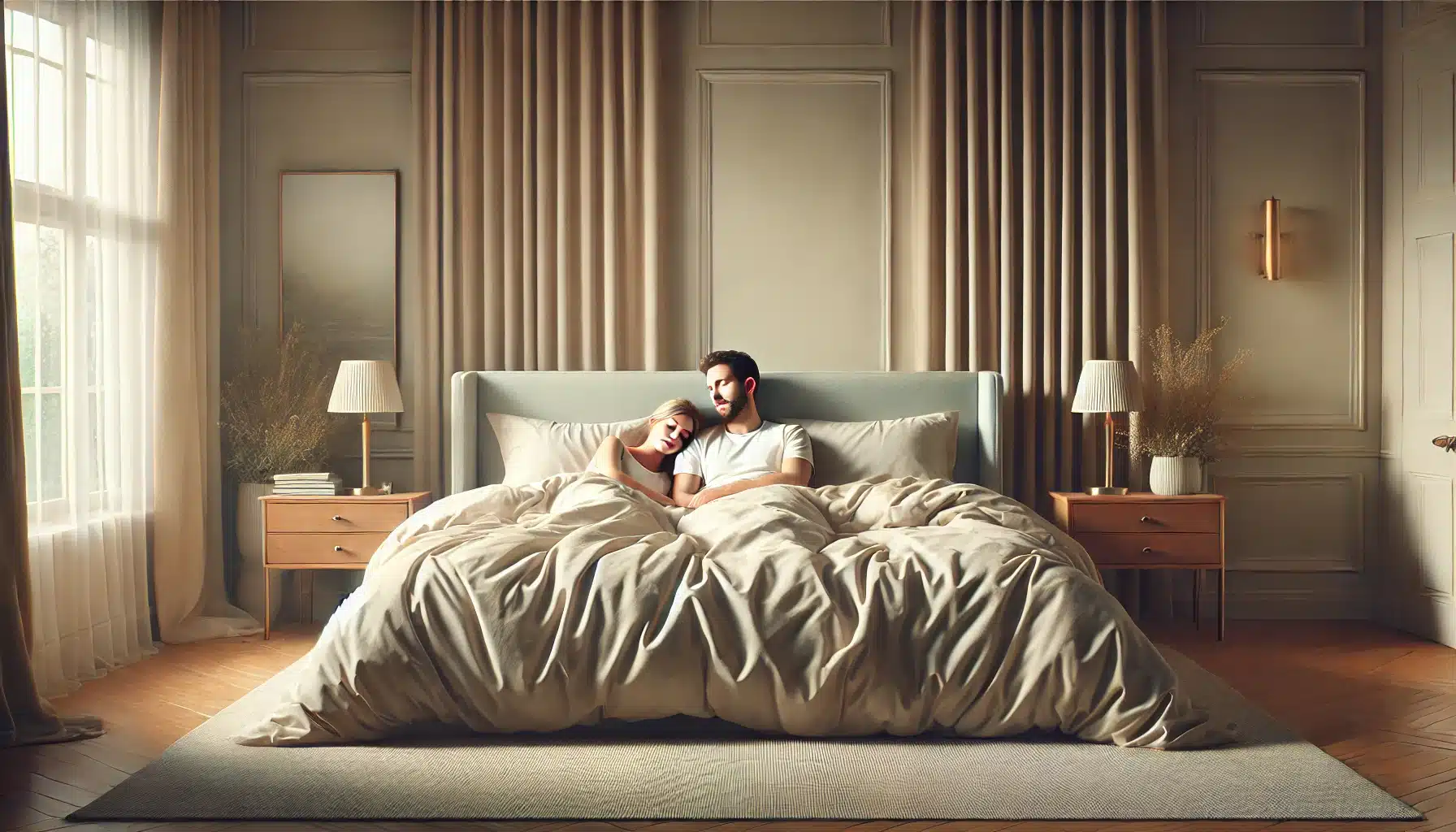In the fascinating exploration of personal habits, the side of the bed we choose to sleep on can unravel numerous insights into our personalities and preferences. From the left-right dynamic to the proximity to the wall or door, each choice tells a unique story about our cognitive processes, emotional inclinations, and relational dynamics. As we navigate through what your preferred side of the bed says about you, we’ll also delve into the popular phrase “getting out of the wrong side of the bed” and explore its likely origins.
The Sleeping Side as a Mirror of Personality
Left Side vs. Right Side
The left-right dynamic holds a unique significance in understanding cognitive tendencies. If you find solace on the left side, you might lean towards structured thinking, logical problem-solving, and methodical planning – attributes associated with the dominance of the left hemisphere. On the other hand, those who prefer the right side may exhibit a more creative, intuitive, and spontaneous mindset, aligning with the right hemisphere’s role in holistic thinking and emotional processing.
Near the Wall vs. Near the Door
The placement of your side in relation to the room adds another layer of insight. Opting for the side near the wall could indicate a desire for security and protection, reflecting stability and a preference for having a ‘back’ against potential uncertainties. Choosing the side near the door may suggest an adventurous or open-minded personality, comfortable facing the unknown and embracing new experiences.
Close to the Bathroom vs. Away from the Bathroom
Proximity to the bathroom reveals aspects of your practicality and health-consciousness. Preferring the side closer to the bathroom might showcase a pragmatic and efficient mindset, emphasizing convenience and practical considerations. Opting for the side farther from the bathroom may suggest a more laid-back approach, with a willingness to adapt to circumstances as they arise.
The Sleeping Side as a Reflection of Relationships
Solo Sleeper vs. Shared Space
Whether you consistently sleep on one side or share the bed equally with a partner can signify your approach to relationships. A solo sleeper might indicate a preference for independence and personal space, valuing autonomy and prioritizing self-care. Sharing the bed equally may reflect a strong sense of collaboration, equality, and intimacy, finding comfort in shared experiences and emotional connection.
Cuddler vs. Space Seeker
The way you position yourself on your preferred side speaks volumes about your comfort level with physical closeness. Those who snuggle close to the edge might appreciate their space during sleep, suggesting a need for personal boundaries and a more reserved approach to physical intimacy. A habitual cuddler might showcase a love for closeness, warmth, and emotional connection in their relationships.
Can you Really Get Out of the Wrong Side of the Bed?
The phrase “getting out of the wrong side of the bed” is a common expression used to describe someone starting the day in a bad mood. While the direct connection between the side of the bed and one’s mood is symbolic, the origin of this phrase can be traced back to ancient superstitions.
In medieval times, there was a belief that the left side was associated with evil forces. The left side was considered inauspicious, and getting out of bed on that side was thought to bring bad luck. As a result, the right side became the preferred and supposedly more positive side to exit from. Over time, this superstition evolved into the figurative expression we use today, emphasizing the importance of starting the day with a positive mindset.
With that being said, there is some truth that if you sleep on the opposite side of the bed than you usually do, this can lead to a broken and interrupted night. And poor sleep can definitely cause low mood, amongst other issues. So in these situations, you could say that you got out of the wrong side of the bed.
Conclusion
In the seemingly simple act of choosing a side of the bed to sleep on, we unveil a complex tapestry of individuality. Whether it’s the left or the right, near the wall or near the door, each choice tells a unique story about our cognitive processes, emotional inclinations, and relational dynamics. As you settle into your preferred spot for a good night’s sleep, consider the rich narrative that your sleeping side tells about you. And as you navigate your morning routine, remember the historical context of the phrase “getting out of the wrong side of the bed,” emphasizing the importance of starting your day with a positive mindset for a more fulfilling day ahead.

